Small Town Spanish Teacher
Teaching Language With Stories

Simple Stories in Spanish: La celebración de Día de Muertos en México
Season 4, episode 14
The celebration of Day of the Dead, or Día de Muertos, is a bright, colorful festivity to remember and honor those who have passed away. To celebrate deceased ancestors, graves are cleaned and decorated, altars with offerings of food and drink are constructed, and faces are painted to make the dead feel comfortable and welcome as they visit the land of the living for the day. Today’s podcast will focus on how Day of the Dead is celebrated in Mexico.
This story is told in the the present and past tenses. Repeated words and phrases include “los muertos” (the dead), “muerte” (death), “vida” (life), “cempasúchil” (marigolds), “velas” (candles) and “mundo” (world). No matter where you are in your language journey, stories will help you on your way. Happy listening and reading!
El Día de Muertos en México
El Día de Muertos tiene una historia larga. Por miles de años, los habitantes de México honraban a sus ancestros. Ellos creían que había un tipo de vida después de la muerte. Creían que sus ancestros existían en otro mundo – el mundo de los muertos.
Este mundo de los muertos se llama Mictlán. En este mundo, los muertos enfrentan obstáculos. Necesitan conquistar estos obstáculos antes de continuar a su mundo final – un mundo de paz y tranquilidad.
Originalmente, los mexicas, los aztecas, los mayas y otros grupos prehispánicos hacían ofrendas de agua y comida para ayudar a sus ancestros con los obstáculos en Mictlán, el mundo de los muertos. Esta celebración de ancestros ocurría en el mes de agosto.
Muchas tradiciones culturales cambiaron en México con la llegada de los españoles. Para el Día de Muertos, primero, la celebración fue ilegal. Cuando la gente de México continuaba celebrando, los españoles decidieron adoptar la celebración como un festival religioso. Ellos cambiaron la fecha de la celebración para corresponder con El Día de Todos los Santos.
La celebración que ocurre ahora en México es una combinación de tradiciones prehispánicas, influencia de la iglesia católica e ideas modernas. Todas las regiones de México tienen tradiciones especiales también. El resultado es un festival de cultura mexicana que es completamente único.
Entonces, ¿cuándo se celebra el Día de Muertos? La respuesta exacta es el dos (2) de noviembre, pero, en realidad, la celebración dura por días.
El treinta y uno (31) de octubre tradicionalmente es el día de preparación. Familias van a los cementerios para limpiar las tumbas de sus ancestros. Después de limpiar las tumbas, las decoran con flores, velas y calaveras. En la casa, personas construyen un altar para honrar a su familia. Decoran el altar con flores, velas y papel picado. El altar tiene fotos de sus ancestros y sus cosas favoritas. Es común poner comidas favoritas y objetos importantes de los muertos en el altar. Siempre hay una botella de agua, y muchas veces alcohol, para los muertos porque según la tradición prehispánica, los muertos necesitan comida y bebida para ayudarles en el mundo de los muertos.
El primero (1st) de noviembre es el Día de Todos los Santos. Es el día de celebrar a los niños muertos. Hay procesiones en las calles. Personas se pintan las caras como calaveras. Visitan las tumbas de los niños. No es un día triste. Es un día de celebración y diversión.
En la noche del primero de noviembre, familias van al cementerio. En el cementerio comen, cantan y cuentan historias de los muertos. ¡Hay una fiesta en el cementerio!
El dos (2) de noviembre es el Día de Muertos. Hay mucha actividad todo el día. Otra vez, personas se pintan la cara. Hay procesiones de música y personas vestidas de esqueletos. Hay fiestas en las calles y en las casas con comida tradicional como tamales y mole y bebidas tradicionales como atole, champurrado y ponche.
Hay muchos colores en la celebración de Día de Muertos, pero los colores más comunes son amarillo y anaranjado. Estos dos colores son muy comunes porque de la flor tradicional de la muerte: el cempasúchil. El cempasúchil es una flor circular. Típicamente es anaranjado o amarillo, pero también existe en tonos de rojo y rosado.
Hay una leyenda que conecta el cempasúchil con los muertos. La leyenda dice que un líder estaba preocupado por su familia muerta. Quería saber que su familia estaba bien en el mundo de los muertos. En la noche, hablaba con los dioses de su preocupación por su familia muerta. En la mañana, su jardín estaba lleno de cempasúchil. El líder creyó que el cempasúchil significaba que su familia muerta estaba bien y contenta en el mundo de los muertos.
El cempasúchil esta por todos lados en la celebración del Día de Muertos. Decora los altares y las tumbas. Es común poner pétalos de cempasúchil en el suelo de la casa para guiar a los muertos al altar. Mujeres ponen cempasúchil en su pelo. Es la flor de los muertos, pero es una flor vibrante y feliz.
El papel picado es otra decoración común. El papel picado es papel de varios colores. Partes del papel están cortadas para revelar imágenes. Unos imágenes comunes en el papel picado son calaveras, esqueletos y cempasúchil. El papel picado está en los altares, las casas y en todas las calles.
El pan de muerto es una comida tradicional del Día de Muertos. El pan de muerto es dulce. Tiene el sabor de anís y naranja y está decorado con azúcar, a veces de varios colores. El pan de muerto es un elemento necesario en el altar. Los muertos necesitan comer su pan de muerto para tener energía en el mundo de los vivos.
Los alebrijes son una adición bastante reciente a la celebración del Día de Muertos. Los alebrijes son la invención del artista Pedro Linares. En el año mil novecientos treinta y seis (1936), Pedro estaba muy enfermo y tuvo una visión de criaturas de colores brillantes. Después de su visión, Pedro empezó a hacer alebrijes. Los alebrijes son esculturas de animales con características exageradas pintadas con diseños en colores brillantes. Unos dicen que los alebrijes son los animales que acompañan a los muertos como guías espirituales. La Ciudad de México hace un desfile especial de alebrijes al fin de octubre.
Hay muchas calaveras en las celebraciones del Día de Muertos. La calavera es una decoración obvia como la calavera representa la muerte. Hay calaveras de azúcar que se llaman alfeñiques . Están en altares y tumbas. Unas personas compran alfeñiques para sus amigos. Hay imágenes de calaveras en el papel picado.
Muchas personas que participan en las celebraciones del Día de Muertos se pintan la cara como calaveras. Unos dicen que es para dar la bienvenida a los muertos. Otros dicen que se pintan la cara para estar tranquilos enfrente de la muerte. Unas mujeres se pintan la cara y se ponen ropa tradicional al esto de La Catrina. La Catrina es un símbolo de la muerte. La Catrina es un esqueleto con ropa elegante y un sombrero grande. Es una mujer de la alta sociedad. La Catrina originó como un cómico político por el artista José Guadalupe Posada, pero ahora representa la muerte y la celebración del Día de Muertos.
En México, el Día de Muertos no es un tiempo de horror. Tampoco es un tiempo de tristeza. El Día de Muertos es una celebración. Es una celebración de familia. Es una celebración de vida y muerte. La gente prehispánica creía que la vida es solo una parte de nuestra existencia. Ellos tomaban tiempo para reconocer la mortalidad y la vida después de la muerte en este festival. Sus tradiciones continúan todos los años en el Día de Muertos.
You can also watch a video of me telling this story on YouTube!
¡Muchas gracias por escuchar! Thank you for listening, and a HUGE thank you for your support. I really enjoy creating and sharing simple, comprehensible stories in Spanish. If you would like to help me in that endeavor, consider buying me a taco!
You can download a printer-friendly PDF of this story. Looking for the English translation? I have a PDF for that too! Read a paragraph in Spanish and then read the English translation to see what you understood
Author: Camilla Given
I'm Camilla! I teach at the high school and college level in a small town in western Colorado. My goal is to teach the world Spanish through stories. I truly believe that stories make learning Spanish easier - and even fun! Feel free to contact me at [email protected] View all posts by Camilla Given
Enjoy this blog? Please spread the word :)

El Día de los Muertos: The Day of the Dead in Spanish
Día de los Muertos, or Day of the Dead, is a unique and vibrant annual celebration held in Mexico. Transcending its common misinterpretation as the ‘Mexican Halloween,’ this event is far from a morbid occasion, instead, it is a vivacious expression of love, respect, and remembrance for departed family members. Rooted in pre-Hispanic traditions and later merged with Catholic celebrations, this deeply cultural event spans the first two days of November, or even three days in some localities, with rituals that have endured for millennia.

Día de los Muertos 2023
In 2023, Día de los Muertos begins on Wednesday, November 1st, and ends at midnight on Thursday, November 2nd. Depending on different localities, the festival may commence on October 31st, making it a three-day holiday. This day is considered to be the first day of preparation when families welcome the deceased by building altars with colorful decorations. This pre-celebration prepares the home and community for the spiritual return of their loved ones.
Origins of Día de los Muertos
The origins of the Day of the Dead trace back to the traditions of the Aztec, Toltec, and other Nahua people. They regarded mourning the dead as disrespectful, seeing death instead as a natural part of the continuum of life. According to these ancient cultures, the deceased remained integral members of their community, kept alive in memory and spirit. These beliefs form the foundation of Día de los Muertos, a time when it is believed that the spirits of the deceased return to Earth temporarily.
As Spanish conquistadors brought Catholicism to the region, this indigenous celebration became intertwined with the Christian observances of All Saints’ Day and All Souls’ Day. It was thus transformed into a syncretic celebration that occurs annually around the fall maize harvest.
Such is the cultural importance of Día de los Muertos that, in 2008, UNESCO added it to its list of Intangible Cultural Heritage of Humanity. This acknowledgment underscored the holiday’s significant role in promoting cultural diversity and preserving humanity’s shared heritage.
Día de los Muertos: A Tapestry of Traditions
Various customs and traditions interweave to create the vibrant tapestry that is Día de los Muertos. Among them are:
Ofrendas (Altars)
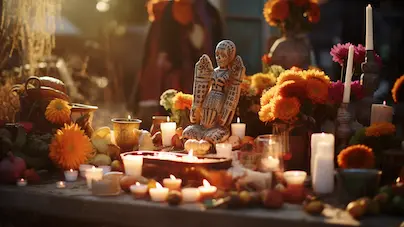
The creation of altars, or ‘ofrendas,’ in homes and cemeteries is a critical part of the celebration. Ofrendas are not for worship; rather, they serve as welcoming platforms for the spirits. They are laden with offerings like water, food, family photos, and a candle for each dead relative. If one of the spirits was a child, the altar might include small toys. Marigold flowers and the smoke from copal incense guide the spirits back and purify the area around the altar, respectively.
Literary Calaveras
‘Calavera,’ originally referring to short, satirical poems, has become synonymous with the Day of the Dead. These witty verses are often shared in print, read aloud, and broadcast on television and radio programs during the celebration.
Calavera Catrina
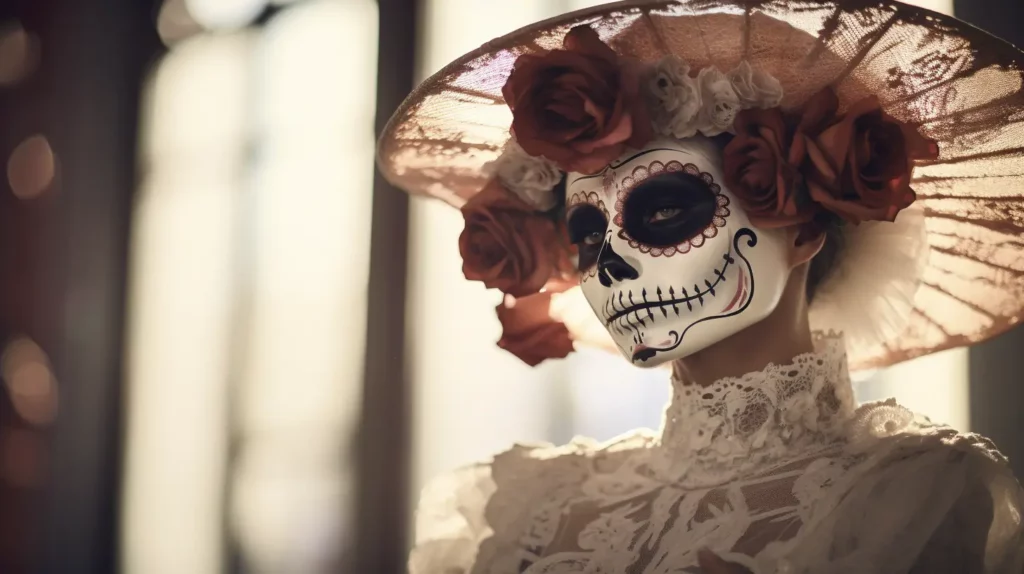
An iconic symbol of Día de los Muertos, Calavera Catrina, or the ‘elegant skull,’ was initially an etching by the Mexican political cartoonist José Guadalupe Posada. As a satire on Mexican society’s emulation of European sophistication, Posada depicted a skeleton dressed in upscale French attire. Today, the calavera Catrina is a ubiquitous symbol of the holiday, and people often don extravagant costumes and skull makeup that mimic her image.
Pan de Muerto

This sweet, rich bread, also known as the ‘bread of the dead,’ is a special treat made just for the holiday. It is baked in the shape of a round loaf with strips of dough laid on top to represent bones and a small dough ball on top symbolizing a tear.

Sugar Skulls

Sugar skulls are a common symbol of the holiday and are often used as decorations for altars. The tradition of sugar skulls is based on the ancient Mexican practice of preserving the skulls of the deceased as trophies, which were displayed during rituals symbolizing death and rebirth.
Cempasúchil (Marigold)

Marigold, also known as ‘cempasúchil’ or ‘flower of the dead,’ plays a significant role in the holiday. Its vibrant color and strong scent are believed to attract spirits and guide them to their altars.
Face painting
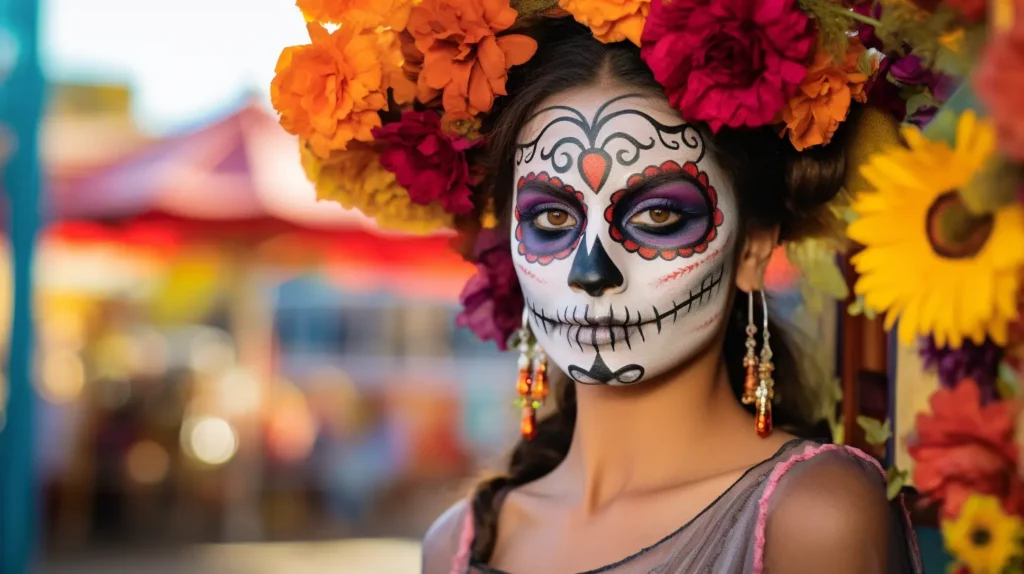
Dressing up and wearing makeup, particularly as colorful and ornate skulls, is a typical part of the celebration. The skull represents death in a playful and ironic manner, and its depiction is often lighthearted rather than grim.
Día de los Muertos: Celebrating Life, Remembering Death
While Día de los Muertos may involve skulls, altars, and gravesites, it is fundamentally a celebration of life rather than death. It’s a time for families and communities to come together in jubilant remembrance of their loved ones, share stories, and enjoy the rich tapestry of traditions that make up this culturally profound event. Each ofrenda, calavera poem, painted face, and piece of Pan de Muerto brings families closer to their ancestors and emphasizes the cyclical nature of life.
Far from being a single-day event, the Day of the Dead embodies a living tradition that continues to evolve, enriched by the collective memory and creativity of the Mexican people. With its intoxicating mix of pre-Hispanic, colonial, and contemporary traditions, Día de los Muertos offers a unique, compelling, and profoundly touching testament to the power of memory, the inevitability of death, and the unending vitality of life.
Finally, Spanish teachers worth your time!
Experience the LingoToGo difference for yourself with a free week of unlimited lessons.
Expert teachers, raving students, guaranteed fun.
No credit card required. No obligation.
Free trial only available in the Americas and Europe. If you are in another region, you can sign up for one week of unlimited Spanish lessons for one dollar. Here’s the link to sign up for $1 .
El Día de los Muertos in Poetry and Word
Celebrate El Día de los Muertos, or Day of the Dead, through the rich literary traditions of our JSTOR poets and writers.

El Día de los Muertos, or Day of the Dead, is a longstanding and time-honored holiday with deep historical and cultural roots . Celebrated in Mexico and in many places throughout the United States, El Día de los Muertos and its associated rituals date back thousands of years to ancient Mesoamerica, where it was celebrated by the Olmec, Toltex, Mexika, and Maya. Although they all honored their dead in different ways, some of their rituals are still celebrated and observed now. Many poets and writers have commemorated the Day of the Dead by writing about childhood memories, family members past, and the foods and traditions associated with the festivities.

Poet Yusef Komunyakaa writes about El Día de los Muertos, describing the family altars and their elicitations in detail .
“Terra-cotta shrines for loved ones Who died to hurt us. We rehearse Their tunes & display their favorite Colors in a labyrinth of unwinding rooms…”
When celebrating El Día de los Muertos, people construct altars to honor and commemorate the deceased in preparation for their return to the world of the living. Many believe that their ancestors return and participate in the celebrations, while others believe that they return to play tricks on those in the living world.
Poet Robert Vasquez imagines what it might be like to be the returning dead , in a fanciful poem about the holiday:
“… And I’m the neighbor gone loveless for years and walled off by eucalyptus and brick. I’m the silent one drawn the bonfires, those in alleyways and sky…”
In Rafael Campo’s poem, Campo tells a vivid story about his out-of-body experience and ultimately death, on El Día de los Muertos:
“As water filled my eyes, I sang a song in honor of the dead. They came for me… The sun, awakened from its dream, Rose suddenly I watched it as I died, And felt the heaviness of all its gold…”
El Día de los Muertos celebrates and honors the departed spirits of family members and loved ones, who are believed to return during the holiday period. It is both a celebration of the life cycle and death, family and faith.
Ian Gonzalez pens a short story about spending El Día de los Muertos with his family at the graves—not only weaving rich details about traditions of the day, but also exploring feelings of loneliness, fear, love, and desire in a wonderful coming-of-age story:
“Kissing a girl behind the tomb on the Day of the Dead, her hair fragrant with all the flower petals boys have showered on her. We were thirteen, fourteen, something was beginning beyond kites that we believed we could hold onto longer…” Read and download the complete poems and stories using the embedded links above or cited below. And ¡Feliz Día de los Muertos!

JSTOR is a digital library for scholars, researchers, and students. JSTOR Daily readers can access the original research behind our articles for free on JSTOR.
Get Our Newsletter
Get your fix of JSTOR Daily’s best stories in your inbox each Thursday.
Privacy Policy Contact Us You may unsubscribe at any time by clicking on the provided link on any marketing message.
More Stories
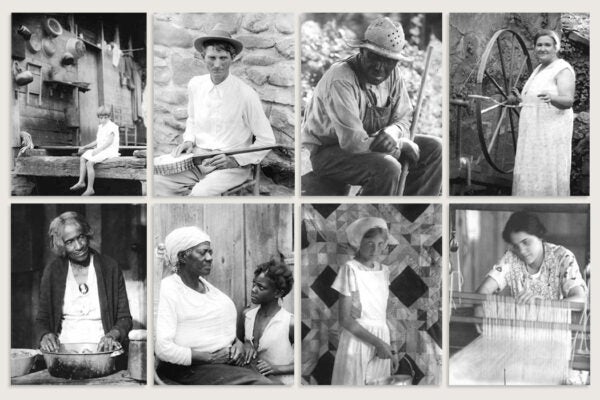
- The “Vanishing Types” of Doris Ulmann

Jura: George Orwell’s Scottish Hideaway
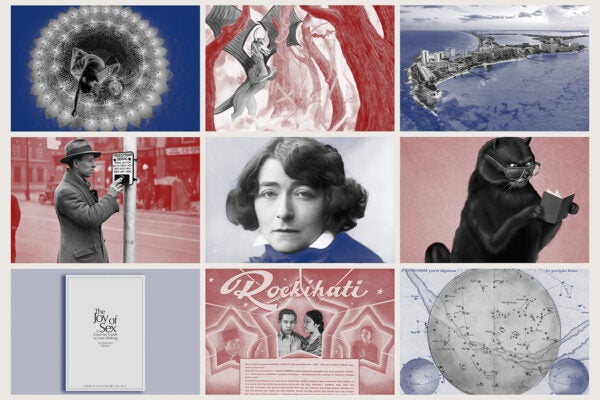
JSTOR Daily: What I Learned

Becoming Beatrice
Recent posts.
- Legionnaires’ Disease, an Illness of Affluence
- Earwigs, Fungus, and Resistance via Literature
- How Al Capone Made Greyhound Racing Great
- Luddites on Trial
Support JSTOR Daily
Sign up for our weekly newsletter.

IMAGES